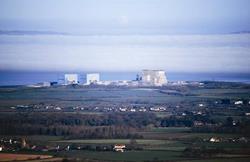Building takes a look at some of the best presents 2013 gave to the construction industry

Chinese and foreign investment
2013 was without doubt the year that the world - and its money - came to the UK. While Battersea Power Station was the most high-profile project to get under way with foreign (in that case, Malaysian) cash, it was the Chinese who really made waves with investments in the £1bn Royal Albert Dock development, the One Nine Elms scheme, the £650m Manchester Airport City and a £500m plan to rebuild the Crystal Palace in London.
More controversially, this corporate money was bolstered by thousands of individual investments in new-build properties by wealthy foreign individuals, with Savills estimating foreign investors put £7bn into the London property market.
Help to Buy
The announcement of this £15bn package of measures to support homebuyers came in March as the economy teetered between triple-dip recession and recovery. Most crucially for housebuilders it included a £3.5bn equity loan scheme, to start immediately, which would support 95% mortgages for first-time buyers. The real present was from the Office of National Statistics to the chancellor: its reclassification of equity loans as “financial transactions” rather than “capital transfers” meant the £3.5bn would not go on the annual budget deficit.
Hinkley Point C
There has finally been progress on the £16bn project (pictured) this year. First it got its environmental permits, then it was given planning permission by the government, then it got a government guarantee behind it and it now also has an agreement on the strike price for its electricity. But it still needs state aid clearance and for EDF and its co-investors to put the cash up before work starts later next year.
Priority School Building Programme
In May the Department for Education slashed the £1.75bn private finance element of the programme to just £700m, with the remainder of the programme to be funded by direct government capital spend. However, at the time, only £300m of additional capital funding was made available, leaving a £1bn shortfall. This left around 150 of the 261 schools with an anxious wait. In June, the 2015/16 spending review did confirm the capital funding, with the result that an additional four batches of schools, worth £300m, came to market, on top of the £400m of schools in the eight batches already being procured. Five batches of privately financed projects, comprising 46 schools worth £700m, are also being procured.
£25bn insurance pledge
This is more of a promise than a gift: a group of six insurance firms have pledged to invest £25bn in the UK built environment in the next five years after the UK managed to secure a satisfactory settlement to EU-wide negotiations over the future regulation of insurers. However, there is no guarantee the money will be forthcoming, and even if it is, it may be directed toward existing assets rather than new projects.
Construction 2025
In the summer, the government published Construction 2025, its strategy for growth in the industry for the next 12 years. It sets out five areas in which the government foresees substantial change - diversity, innovation, sustainability, manufacturing and leadership. There are four tough targets - a 33% reduction in cost, a 50% reduction in greenhouse gas emissions, a 50% reduction in build time and a 50% reduction in the trade gap between construction exports and imports.
2013 was host to some spectacular successes. You can see our rundown of the year here, and our top 10 rundown of the best here. Alternatively, you can have a look at what we consider the biggest blunders of the year…
It was a dramatic year for others. It wouldn’t be Christmas without some family feuds in the industry. We said hello to some new people, and goodbye to others. There were some high-profile step-downs; we round up the highlights with our Christmas Jumpers feature.
And of course, it wouldn’t be Christmas without the odd unwanted gift …



























No comments yet